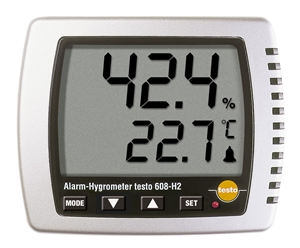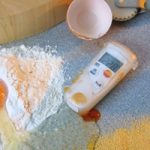Humidity is a complex issue that plagues both businesses and consumers on an regular basis. Capable of interfering and destroying a range of items, humidity is a constant in our environment.
Around the country, humidity is at varying levels and causing different concerns. For example, in early morning Adelaide, the humidity is 86 per cent at 8 degrees Celsius. North in Darwin, it is 20 degrees, but the humidity is considerably lower at just 13 per cent. This highlights the range of humidity and how important constant management and testing is to a business and its employees.
What is humidity?
In a general sense, humidity is the amount of water vapour present in the air. With more water in the air, the humidity is capable of reducing sweating and cooling in the body.
Atmospherically, higher humidity is likely to accompany rain, dew or fog. However, humidity can affect more than the weather as it can dramatically create problems with crops, food, stock, medicine and goods.
What types of businesses could be affected by humidity?
- Garden centres
Regardless of the size and scope of the garden centre, humidity is constant threat to plant health. Dry air causes plants to sweat more than humid air, so constant monitoring is needed.
In dry conditions, plants will struggle to generate enough water for themselves and quickly lose water. The plant will look tired and ill and isn’t visually pleasing to consumers.
In humid conditions, the plant can become damp and stagnant. This promotes mould and bacteria and can easily wipe out an entire garden centre’s supply of particular plant species in little time.
- Warehouses
Businesses with warehouses storing food or stock also need to be aware of the risk of humidity. Food that is likely to be placed in the warehouse for a significant amount of time requires optimum conditions to ensure the longevity.
It is also important to remember that different foods should be placed a various humidity levels. Foods such as vegetables, in general, need high humidity whereas fruit require a lower level.
While the weather is unlikely to play a role in warehouse humidity, your air conditioning or ventilation system will. This needs constant monitoring to avoid rotten food or low-quality stock on arrival or on pick-up.
- Museums
The atmosphere inside a museum is constantly checked and monitored to ensure the preservation of art and other ancient and precious collections.
Many fragile pieces are placed in special exhibits where temperature and humidity are specially set. In a Museums Australia, Victoria information sheet, museums are encouraged to identify what pieces give off moisture and could add to the humidity.
“When the surrounding air is very dry, organic materials will give off give off give off some of their moisture: they become brittle and may shrink, warp, split or crack,” the report said.
“When the surrounding air is damp, the materials will absorb some of the moisture from the air: they may swell, cockle, warp, change shape and/or lose strength.”
Humidity options available
Having the right tools and measures in place goes a long way to ensuring the quality of what ever is in your possession. From ancient art to plants, humidity is issue that necessitates constant monitoring and investigation.
For this purpose, Testo have a range of options for businesses such as the testo 608-H2 Alarm Hygrometer. This meter can check both humidity and temperature.
The device can also easily be mounted onto the wall for easy viewing and includes an accurate alarm that sounds if the level has been exceeded. The testo 608-H2 Alarm Hygrometer features a long-term stable sensor which means after years of use, the device should be able to provide accurate humidity levels in any environment.









 Reduce cooking oil costs while ensuring quality
Reduce cooking oil costs while ensuring quality Expert knowledge on CO2 monitoring
Expert knowledge on CO2 monitoring Refrigeration knowledge - in 3 modules
Refrigeration knowledge - in 3 modules



